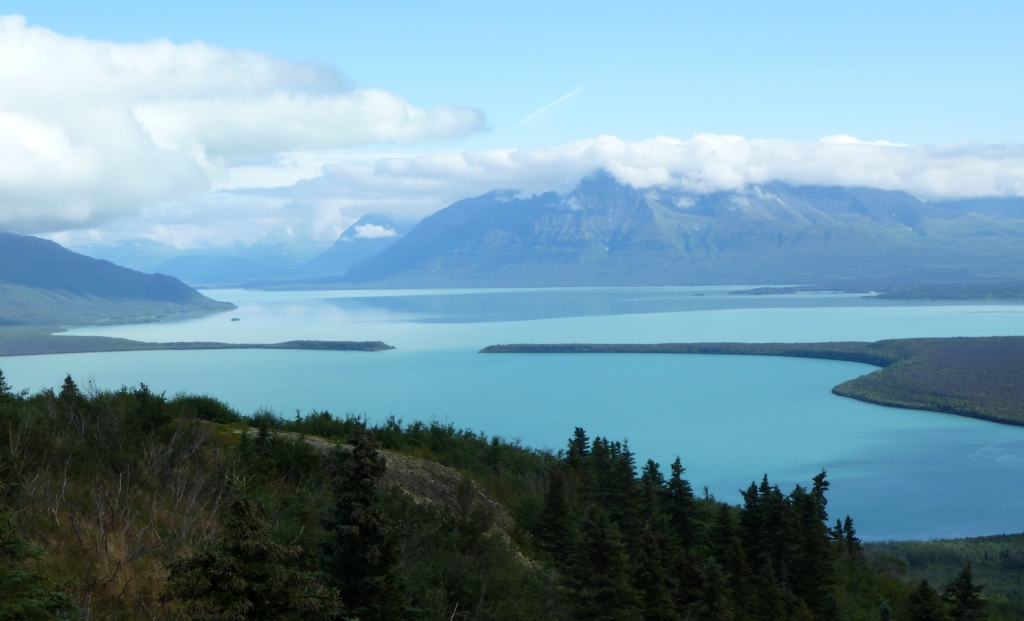“Fitz packs an enormous amount of information into a narrative that somehow never overwhelms the reader…Fitz’s writing is as delicately balanced as the ecosystem he details, turning this into one of the finest Alaskan wildlife books I have yet encountered.”
Anchorage Daily News
I first traveled to Brooks River within Katmai National Park in early May 2007, and today it’s hard for me to imagine my life without it.
On the morning of my first flight to Brooks Camp (which is only accessible by boat, plane, or a very long, boggy, buggy, and rough cross-country hike), fellow rangers and I hauled our clothing, equipment, and months of food to the floatplane docks along Naknek River in the small town of King Salmon, a sprawling community surrounding an airport and mothballed U.S. Air Force base. We were excited and enthusiastic to begin the adventure, but few of us, I believe, truly understood what we were getting ourselves into. I certainly didn’t. Not quite a greenhorn when it came to wild areas, I had never experienced a landscape like this.
Immediately after takeoff, I gazed out the window of our small plane, my eyes transfixed on what many people would describe as nothing. King Salmon’s few houses, roads, and infrastructure quickly yielded to tundra and scattered spruce trees. This was land devoid of permanent human habitation. Cross hatching animal trails led to unknown destinations. I saw wildly meandering creeks, too many ponds and lakes to count, and a horizon bounded by unnamed mountains.
After twenty-five minutes of flying, the pilot landed smoothly on Naknek Lake’s calm surface, and we taxied to an empty beach in front of the few scattered buildings marking Brooks Camp. With the help of fellow staff, I hurriedly unloaded and stashed my gear inside a nearby tent frame cabin and began to settle in.
Later that evening, Jeanne, my then girlfriend and now wife, and I returned to the beach. I had just finished a winter job at Death Valley National Park, where daily temperatures had already risen above 100˚F, but Brooks Camp looked like winter couldn’t decide to stay or go. Leaves had not broken bud, thick blankets of snow clung to the mountains, and the underground water pipes to our cabin remained frozen. I walked wide-eyed, trying to take in the totality of the scene—the turquoise color of Naknek Lake, the snow-capped mountains, the pumice-strewn beach, a set of bear prints in the sand—when Jeanne waved her arm toward the horizon and remarked, “This is spectacular.”
I don’t recall if I responded or not. Doesn’t matter, because she was right. I had never looked upon land so empty yet so full.
Katmai and Brooks River are unlike any other place. But relatively little has been published about the bears, salmon, and the humanity that intertwine at the river. I’m pleased to announce The Bears of Brooks Falls: Wildlife and Survival on Alaska’s Brooks River, is now available via Countryman Press. In eighteen chapters, the book strives to explore the ecology of the river’s famed brown bears and salmon as well as the complex relationship people have with the place.

Part one focuses on the colossal eruption of Novarupta Volcano in 1912 and the discovery of the Valley of Ten Thousand Smokes. This event reshaped the area’s history and led to the establishment of Katmai National Monument in 1918, a time when the national park idea was still fledging.
Today, Katmai is most famous for its brown bears. Part two is devoted to their lives and the salmon the bears depend on to survive. I explore the marvel of the hibernating bear from a den on Dumpling Mountain, discover the river from a cub’s perspective, and follow the tribulations and growth of young bears recently separated from their mother. The brown bear mating season provides the chance to learn how bears compete during one of the most important times in their lives. Writing about the bear hierarchy, I consider how this social structure provides advantages to bears who live in an unfair world. Katmai’s brown bears experience hunger in a profoundly different way than people. They must eat a year’s worth of food in fewer than six months to survive hibernation. Their feeding choices and habits reflect highly tuned adaptations to take advantage of summer’s ephemeral bounty. And, the poignancy of a cub’s death, one witnessed by thousands of people on the park’s webcams, provides the chance to reflect on the end of a bear’s life.
Few organisms are as important to an ecosystem as salmon are to Katmai. Leading Odyssean lives, sockeye salmon face tremendous obstacles and challenges. From fresh water to the ocean and back again, they travel thousands of miles, running a gauntlet of predators to fulfill their destiny. Weakened by their freshwater migration and subsisting without food for weeks, the journey of Brooks River’s sockeye ends when they sacrifice their lives to reproduce. They are the ecosystem’s keystone, driving the river’s abundance and significance.
In part three, I examine modern humanity’s influence over Brooks River. Humans may be the river’s biggest ecological wildcard. Climate change looms large over the land and seascapes, and people alter the behavior of the bears that make the scene so special. The infrastructure needed to support thousands of visitors and their recreational activities invite conflict with bears. Managing bears and people in such a small area is especially challenging, provoking a decades-long and often emotional debate about the river’s future.
The Bears of Brooks Falls: Wildlife and Survival on Alaska’s Brooks River is an exploration of brown bears and salmon in one of the Earth’s last fully intact ecosystems. It’s an honest and deep dive into issues surrounding the role people play in the riverscape and Katmai National Park. I’m so excited for you to read it, and I hope you’ll consider adding it to your bookshelf.

